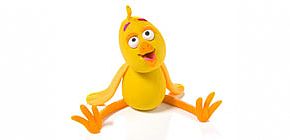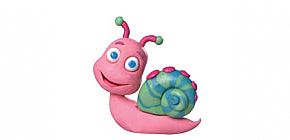Infant Development: Eyesight Development in Infants
.jpg) |
|
The sense of sight, or vision, is important for infants, as it helps them navigate their surroundings and perceive the world. In their first year of life, their eyesight gradually develops and stimulates the brain’s normative development, via visual aids. What are the stages of eyesight development, what is the parent’s role in this process and when should your infant be seen by an eye doctor. All the information you need, right here.
Eye and eyesight development in infants
Even though the eyes and visual nerve develop early on in pregnancy, most eyesight development takes place after birth.
● Birth to 6 weeks - The infant responds well to differences in darkness and light, barely controls their eye muscles, which leads their vision to be unfocused and their range of clear sight limited to just 40 cm. Infants can distinguish colors from one another from birth, but mainly reach to stark contrasts.
● 6 weeks to 3 months - The infant begins to control their eye muscles and is able to focus their gaze on objects for long periods of time, as well as respond to their movement. The infant’s retina has already matured and enables them to view clearly.
● 3 to 4 months - During this period, the infant’s sense of sight undergoes significant development. You will notice that the infant is able to follow objects along their entire trajectory, even from a distance. Your infant is also developing their binocular vision, namely, synchronicity of an image viewed by both eyes. This is also when the slight strabismus many newborns have, goes away.
● 4-6 months - The infant can see clearly and with focus. They are able to distinguish elements that stand out less and are more complex, such as facial features and colors that don’t majorly contrast. At this stage, their three-dimensional vision develops, enabling them to estimate distances and hand-eye coordination.
Parents’ roles in the eyesight development process
While you cannot intervene in the laws of nature or establish your child’s developmental rhythm, you can help the developmental process along, especially with respect to the prevention of disturbances. To do so, you must pay attention to your infant’s development, be aware of their seeing abilities at every stage, and adapt your actions accordingly.
● Following birth, your infant needs very few stimuli - you and your face. Since they cannot see farther than 40 centimeters away, they will general see the person holding them. Bring your face near theirs and speak to them from up close. The sense of closeness will enable your infant to practice focusing.
● Try and match your infant’s living space (crib, stroller, activity mat) to their vision’s developmental stage. Place just a few items around them to avoid overstimulation and choose colors wisely, especially those that highly contrast, such as black and white, or red and white.
● Expose your infant to visual motion, with a preference for motion that occurs naturally, such as trees in the wind, or the waving of human hands, over artificial motion, like on television.
When should you consult with an eye doctor?
The first eye examination takes place at the hospital, immediately following your infant’s birth. Some recommend taking your child for an additional eye exam at one year to diagnose or rule out strabismus (cross eye), or a need for glasses. At age three, all children receive an eye exam at Tipat Chalav (well baby check-up clinic).
That being said, it is important that parents’ monitor their children’s eyesight development from birth, to be able to identify issues that require medical attention:
● A lack of focus or eye contact from 3 months onwards
● A lack of response to extreme visual stimuli
● Strabismus (cross eye) that does not go away by the age of 4 months
● Droopy eyelids
● Asymmetrical eyes or eyelids
● A significant sensitivity to light
● Frequent squinting or eye rubbing
● Constant tilting of the head in one direction
● Frequent bumping into objects and walls when crawling and walking
From the moment your child first enters the Tipat Chalav (well baby check-up clinic) system, you, the parent, will learn all about growth curves. What ...
The first month following childbirth is generally the most charged period your family will experience. Your hormones are raging, your infant is gassy ...
Have you ever heard of an infant massage course? You likely have; they’re everywhere. This is because infant massage responds to a broad physical ...


.jpg)
.jpg)
.jpg)
.jpg)



.jpg)
.jpg)
.jpg)
.jpg)

.jpg)





Contact us